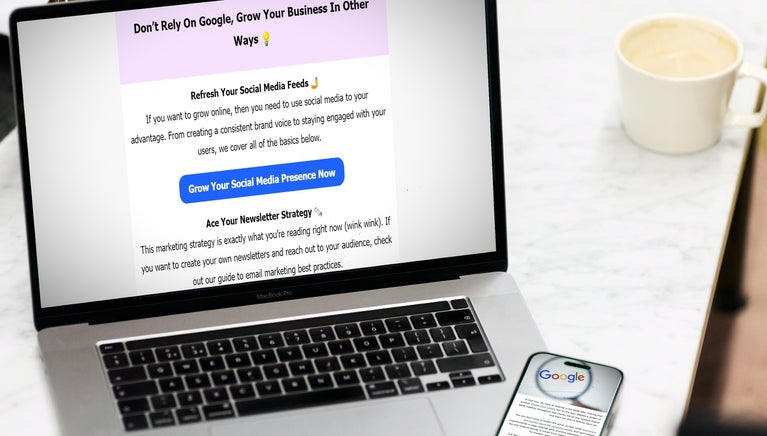Your Site Should Be Optimized for Google Lens Searches in 2025: Here’s Why
If you click to purchase a product or service based on our independent recommendations and impartial reviews, we may receive a commission. Learn more

As the search landscape transforms in 2025, your business should consider all the ways searchers are looking for products and services online. One of the most popular methods right now is visual search, which has been continually spurred on by free tools like Google Lens.
Google Lens, released back in 2017, is one of the earliest visual search platforms. It’s primarily used by shoppers to identify exact (or similar) items they’d like to purchase, be it a pair of sneakers someone is wearing, or a piece of furniture they’ve seen in a showroom.
If you’re selling online, optimizing your website for visual search is a wise move, since it’ll ensure that your products are seen by Google Lens users and increase traffic to your store. To learn about Google Lens’ growing popularity and how to optimize your website for visual search, keep reading.
Why Should I Optimize My Site for Google Lens?
Each month, users make more than 20 billion visual searches on Google Lens. This popularity isn’t expected to drop anytime soon either, with Google recently making it easier for users to conduct image searches when browsing on iOS devices, too.

The sheer convenience of visual search is a hit with shoppers, making it much quicker and easier for them to find what they’re looking for when shopping online. So, if your website doesn’t have optimized imagery that’s prepared for Google Lens searches, you could be missing out on a key traffic and revenue stream.
💡 Did you know?
Google’s AI Overviews are also appearing in Google Lens search results. For instance, if a shopper has taken a photo of some sneakers, the AI overview might be able to give them additional context about the footwear, or even identify the exact brand that makes them. By optimizing your website effectively, you can increase your chances of appearing in these AI overviews for visual searches.How Can I Optimize My Website for Google Lens?
To make sure that your website is optimized for Google Lens, here are three methods that you can implement on your webpages today.
- Check your imagery’s quality – Make sure that your website imagery is high-resolution, has clear backgrounds, and is well lit. The better your product imagery looks, the more likely users will want to click on them during Google Lens searches.
- Add relevant alternative text to images – The alternative text you use must accurately describe the contents of your images. Make sure that they’re clear, descriptive, and reflect the kinds of products that your audience might be searching for via Google Lens.
- Use ecommerce structured data – Google also uses structured data, a piece of code you add to your webpages, to better understand your website’s imagery. This makes it easier for Google to showcase your imagery in relevant Lens searches.

Optimizing for Google Lens: Final Thoughts
With this knowledge, you’re now ready to optimize your website for Google Lens searches. But remember, this search method is popular because of its convenience. Make sure that your site’s imagery and its data gives Google accurate information about your products. That way, it can better provide users with relevant visual search results that could inspire them to click through to your website.
Though visual searches are on the rise, you need to make sure that you can identify all of the ways users are looking for your products or services online. Whether that’s through traditional Google search methods, or voice search optimization, you need to be ready for these evolving user behaviors.





Leave a comment